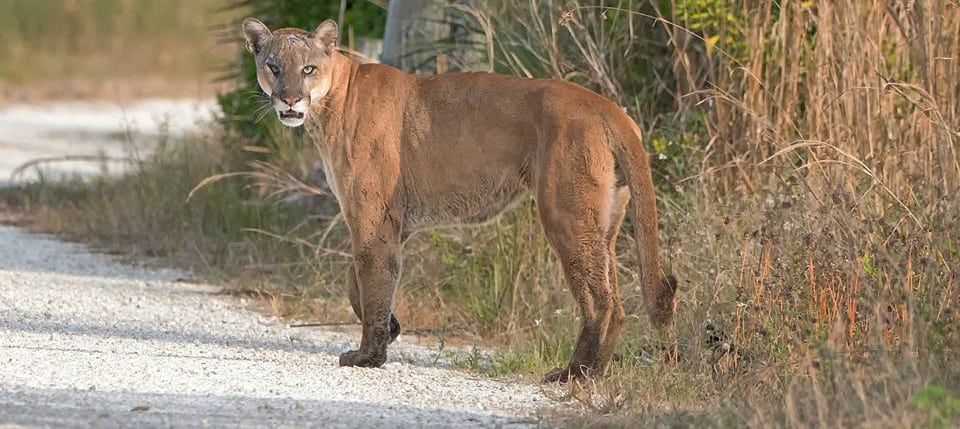Share this article
Florida panther population grows, but gene flow still a concern
Efforts to bolster the only existing population of Florida panthers have been largely successful, but genetic health of the animals will likely remain a concern due to a lack of habitat connectivity.
“Definitely the population increased, but that does not mean the population will continue to grow,” said Madan Oli, a professor in wildlife ecology and conservation at the University of Florida and one of the co-authors of a Wildlife Monographs study published recently by The Wildlife Society.
Florida panthers (Puma concolor coryi) were in a desperate situation in the early 1990s when only 20 to 30 individuals remained in the wild, almost all in the very southern part of the state, west of Miami. The population was so low that the big cats began to have problems related to inbreeding like undescended testicles in adult males, heart problems, crooked tails, reduced immune responses and poor sperm counts.
“A lot of these problems were thought to indicate inbreeding,” Oli said.
The Florida Fish and Wildlife Conservation Commission stepped in and decided to supplement the population with eight female pumas (Puma concolor stanleyana) translocated from a genetically more diverse population in Texas.
Oli and his co-authors wanted to see if these efforts were successful by examining the population demographics of the cats from 1981 to 2015. Over this time period, they examined radio-tracking, reproductive and mark-recapture data, and information gathered on dead cats and kittens. They also analyzed blood samples and looked at the genetics of individuals and the population.
The researchers found that by the end of the study period, there were about 120 to 230 panthers in Florida south of the Caloosahatchee River. The cats mostly lived in public land including Everglades National Park, Big Cypress National Preserve, Florida Panther National Wildlife Refuge, Picayune Strand State Forest, and Fakahatchee Strand Preserve State Park, but also crossed into private land in some areas.
“Based on these observed facts, we think that the genetic rescue experiment was a success, and the population responded positively to this experiment,” Oli said. “After the introduction of the Texas genes, the health problems associated with inbreeding largely went away. Genetic diversity returned to healthy levels, and the population increased almost four-fold.
However, the fact that the population is doing well currently doesn’t mean it will continue to grow, Oli said. The problem is that the nearest population of pumas to the Florida panther population lies in Texas, several states away, so without natural or assisted gene flow from periodic translocation, the genetic diversity of these cats will only decrease.
“Ultimately the inbreeding problems are going to pop in,” Oli said, adding that urban development will likely stop current numbers from increasing. “There is not a whole lot of space for them to grow into,” he said.
The panthers may also see competition for prey resources from invasive predators like Burmese pythons (Python bivittatus), which can wipe out the mid-sized mammals like raccoons (Procyon lotor) and opossums (Didelphis virginiana) that the panthers feed on. “If the pythons manage to move where the primary Florida panther range is, that can cause a problem,” Oli said.
He’s also concerned that while the panthers seem healthy currently, one natural disaster would be enough to drastically reduce or even wipe out the whole population.
“That is always a dangerous thing in the conservation world, because anything can happen,” he said, adding that there is no backup Florida panther population.
This article features research that was published in a TWS peer-reviewed journal. Individual online access to all TWS journal articles is a benefit of membership. Join TWS now to read the latest in wildlife research.
Header Image: A Florida panther in Hendry County, Fla. in January 2017. ©Florida Fish and Wildlife Conservation Commission








